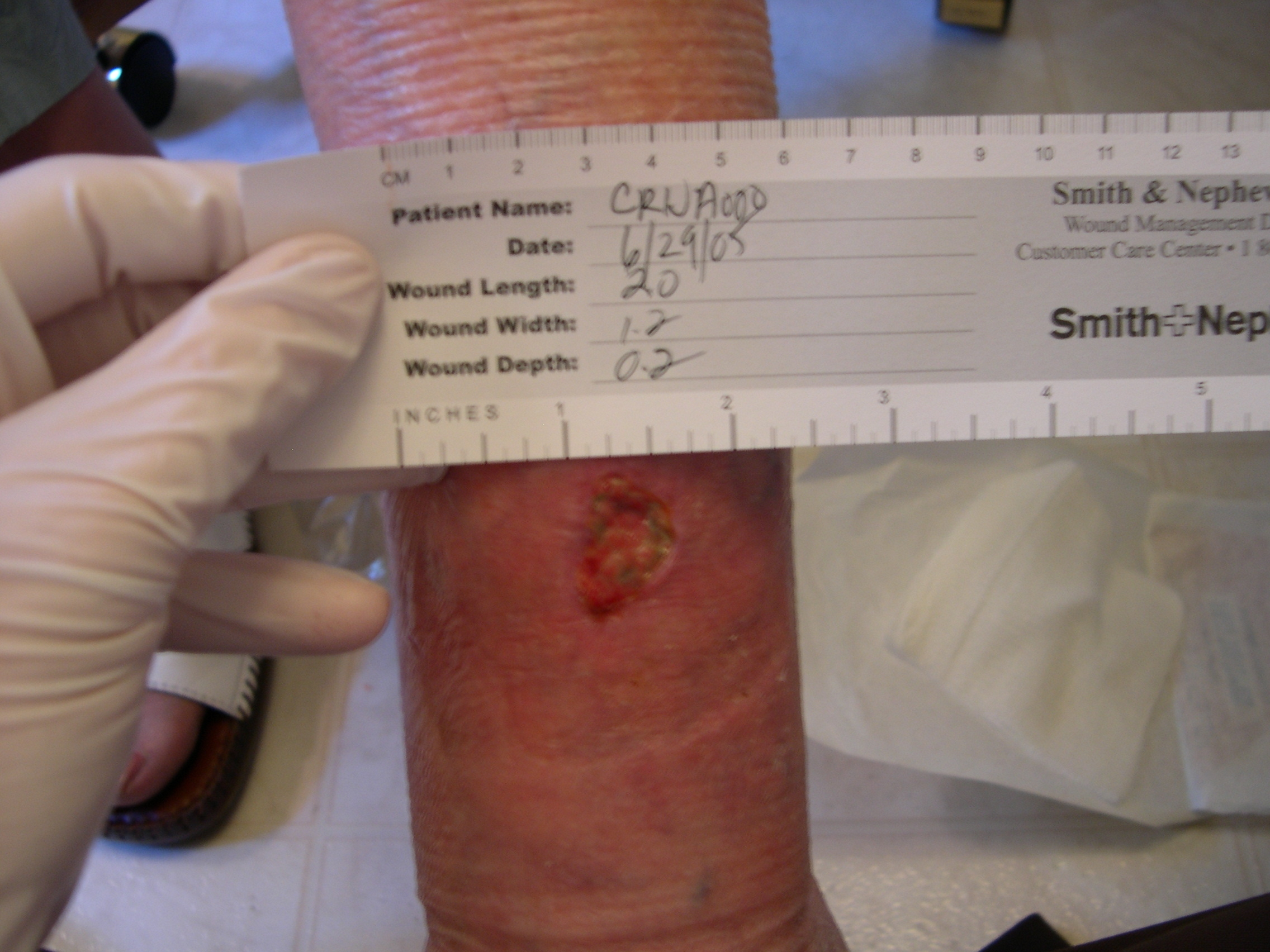

|
WOCN Homepage |
Case Studies: Three case studies are presented to demonstrate that chronic wounds with delayed healing in complex patients can have improved outcomes. Patient or staff was instructed to cleanse with wound cleanser, then place SAG in the wound bed with secondary cover dressing, light compression bandage or kerlix.
Patient 1: Patient 80 year-old female with trauma wound to LLE. History of HTN, GERD, MRSA. Wound 3 months old at 6/22/05, measured 2.5x1.7x0.8. Patient reported no pain, cognizant and did not require home health. Patient was instructed to complete protocol every 2-3 days. Wound at 6/29/05 measured 2.0x1.2x0.2 and at 7/20/05 measured 0.8x0.5x0.1. (Figures 1&2)
Patient 2: Patient 75 year-old female with trauma wound to right groin. History of dementia, epilepsy, diabetes, and numerous decubitus ulcers. Wound was frankly infected at 2/16/05/05 and measured 4.8x2.2xslough. Patient reported pain status of 4-6. Daily dressing changes by SNF staff ordered. Wound had reduced to 3.0x1.0x0.7 one week later, and to 0.5x0.3x0.025 by 3/9/05. Patient reported no pain on subsequent visits. (Figures 3&4)
Patient 3: Patient 72 year-old female with trauma wounds to right forearm. History of polymyalgia, hyperthyroidism, steroid dependency. Wounds 1.5x9.2x0.15 and 7.0x1.0x0.1 at 7/14/05. Patient reported no pain, cognizant and did not require home health. Patient completed dressing changes QOD. Proximal wound resolved at 7/28/05 and distal now two wounds measuring 0.9x1.4x0.05 and 0.6x3.0x0.05. (Figures 5&6)
Conclusion: Cases demonstrate that even complex wounds with complicated elderly patients, with appropriate cleansing and debridement, can be enticed to heal. Treatment was cost-effective, and was easily completed by patient or facility staff, facilitating compliance to protocol.
The support of Medline Industries, Inc. for this project is gratefully acknowledged.

See more of Case Study Poster Abstracts
See more of Case Study Abstracts
See more of The 38th Annual WOCN Society Conference (June 24 -- 28, 2006)